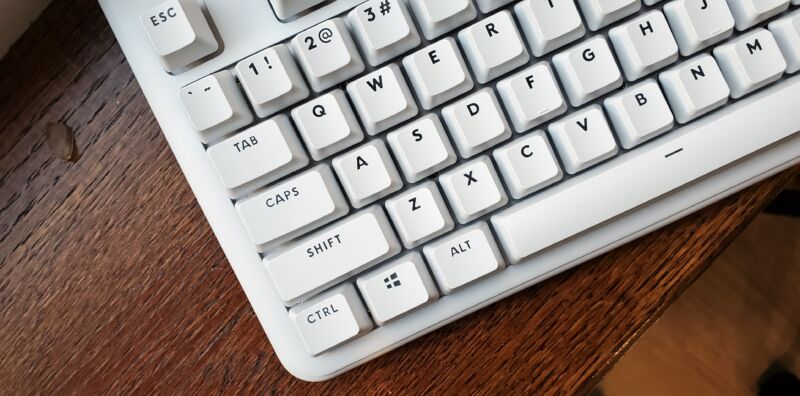
It's no secret that mechanical keyboards provide some of the best tactile typing experiences available. It's also not a secret that wireless keyboards can be a productivity boon, reducing workspace clutter and easily connecting with numerous device types. Thankfully, wireless mechanical keyboard selection has grown so much in recent years that you can find options with feature sets on par with the priciest wired keyboards.
When exploring today's selection of cable-free mechanical keyboards, there's plenty to consider beyond switch type. For example, how many devices do you want the keyboard to be able to toggle across? Should any of those wireless connections use a USB receiver? Battery life is also paramount (all the options here are rechargeable) and, just as with any other premium keyboard, features like programmability, onboard memory, and quality keycaps are important.
With those qualifications in mind, we sought out the best wireless mechanical keyboards for power users.
Table of Contents
Razer BlackWidow V3 Pro
The Ars pick
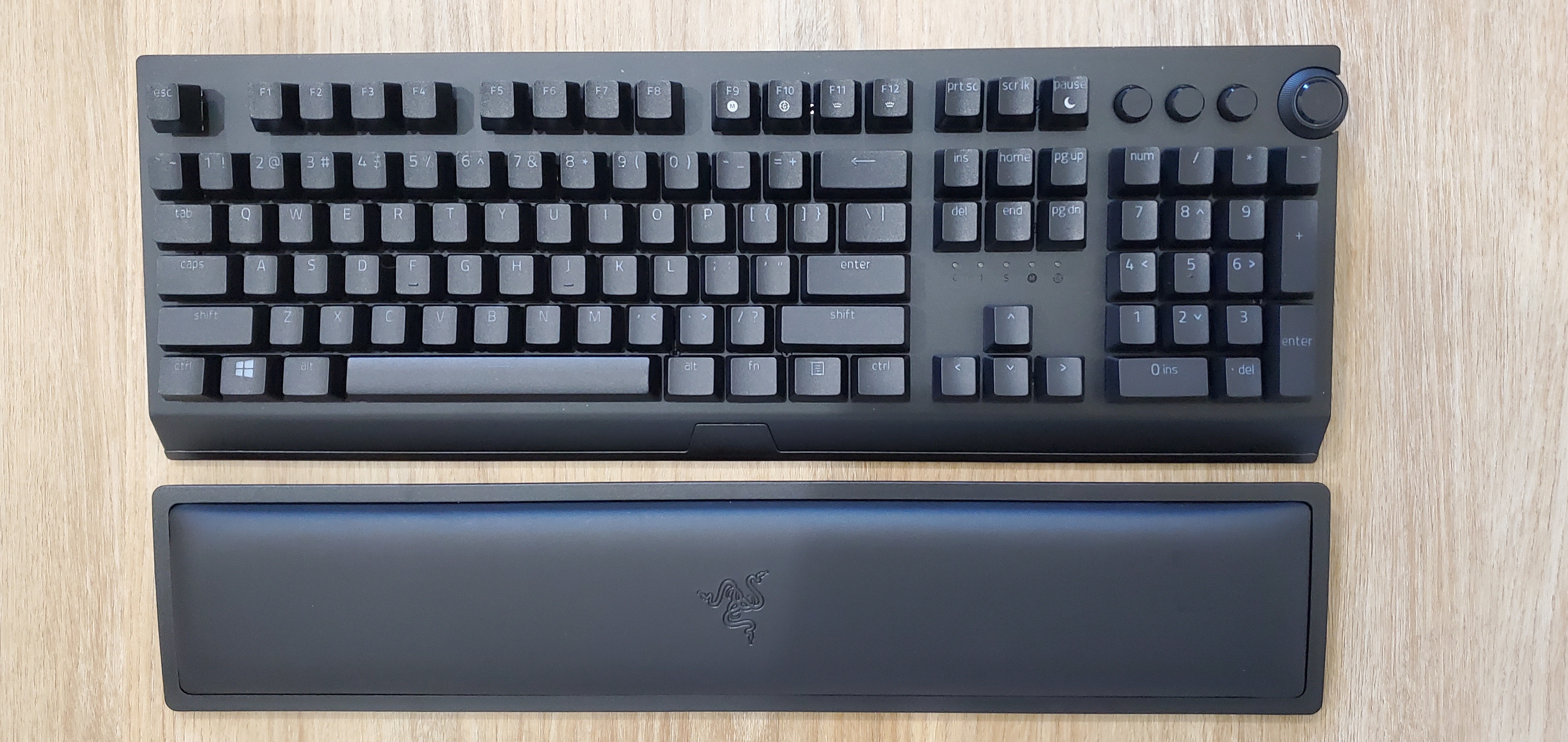 The best wireless mechanical keyboard is Razer's BlackWidow V3 Pro because it doesn't leave you wanting (for the most part).Scharon Harding
The best wireless mechanical keyboard is Razer's BlackWidow V3 Pro because it doesn't leave you wanting (for the most part).Scharon Harding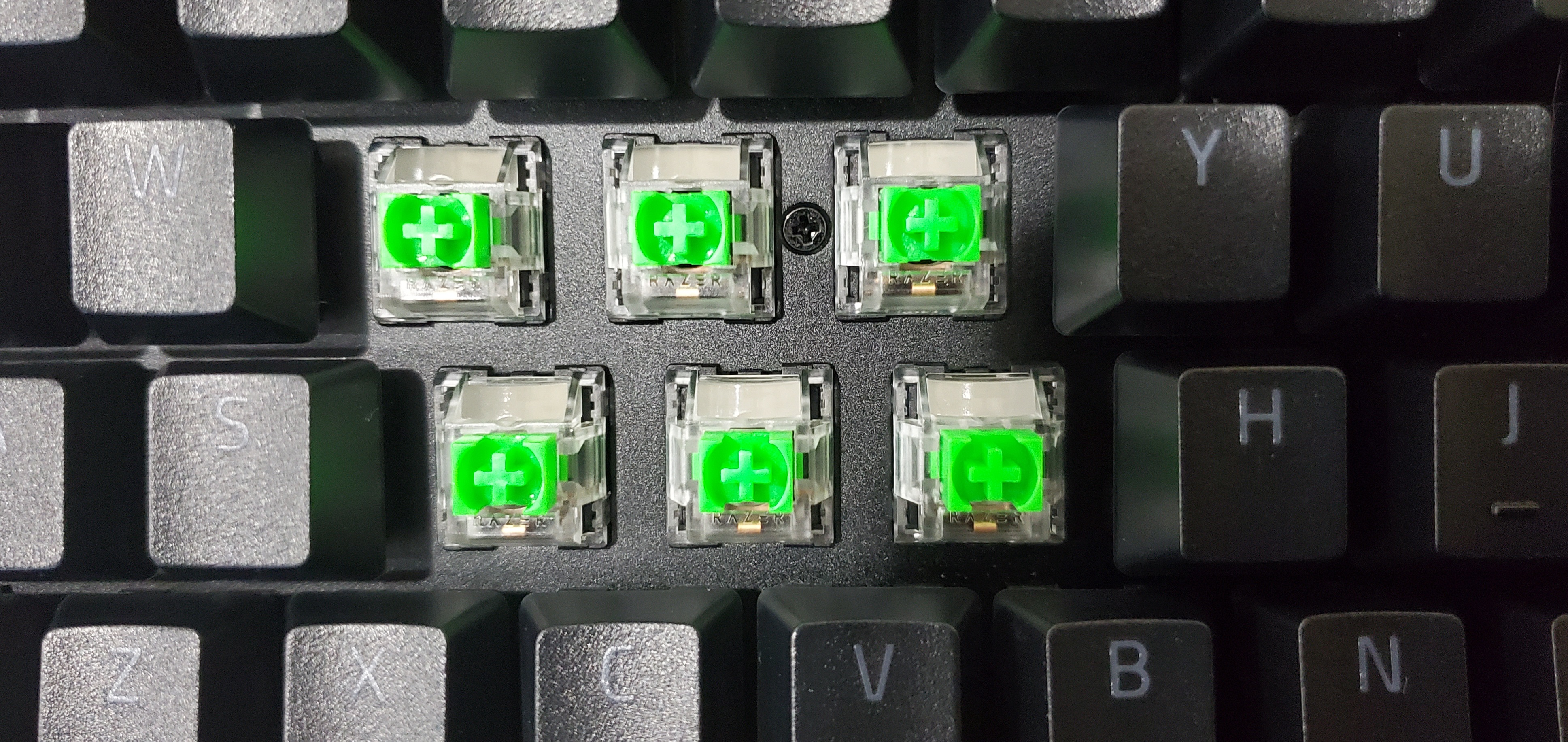 Razer's keyboard comes with clicky (pictured) or linear switches.Scharon Harding
Razer's keyboard comes with clicky (pictured) or linear switches.Scharon Harding The stabilizers tend to get pretty noisy.Scharon Harding
The stabilizers tend to get pretty noisy.Scharon Harding There's USB-C charging and an optional dongle that brings 1 ms of lag.Scharon Harding
There's USB-C charging and an optional dongle that brings 1 ms of lag.Scharon Harding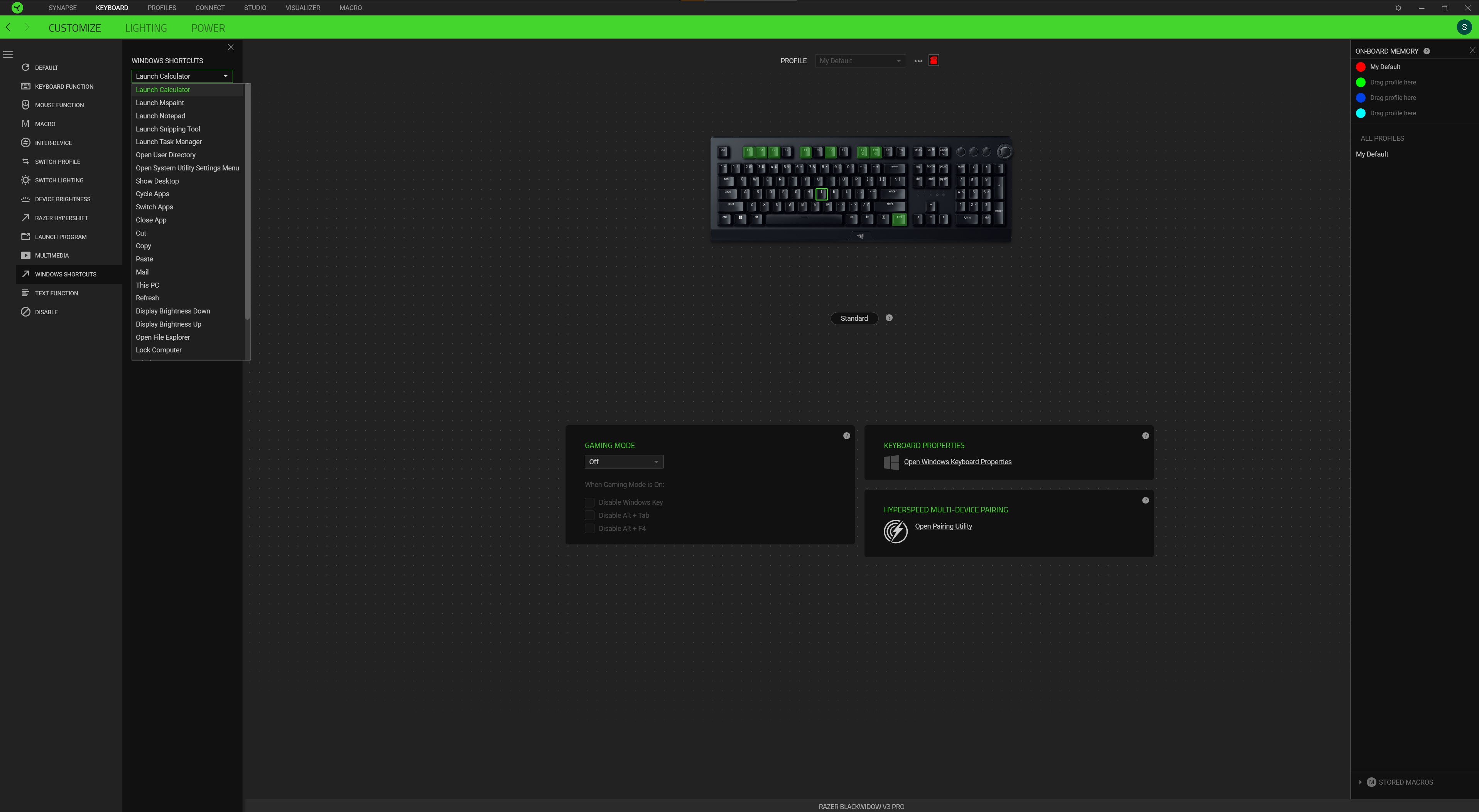 Many advanced capabilities require Razer's Synapse app to be open.Razer
Many advanced capabilities require Razer's Synapse app to be open.Razer
| Specs at a glance: Razer BlackWidow V3 Pro | |||
|---|---|---|---|
| Connectivity options | Bluetooth 5.0, USB-A dongle, USB-A cable | ||
| Switches | Razer Green or Yellow | ||
| Keycaps | ABS plastic | ||
| Dimensions | 17.7×9.8×1.7 inches (450.×248.4×42.3 mm) |
||
| Weight | 3.1 pounds (1.4 kg) |
||
| Warranty | 2 years | ||
| Price (MSRP) | $200 | ||
Buy: From $140 at Amazon and Best Buy
Razer's BlackWidow V3 Pro is the rare wireless option to carry nearly every feature you'd expect to find in a decked-out wired mechanical keyboard. From its full-height switches and a full-size programmable layout with media keys to its onboard memory, multiple Bluetooth profiles, and braided cable, there's little missing here.
The BlackWidow V3 Pro has been my go-to for productivity uses for a couple of years. Every key—including the four media keys—is easily programmable in Razer's Synapse software. That's plenty, but you can also program each key with a secondary input, which is activated when you simultaneously press the key you designate as the "Hypershift" key.
Key bindings can launch macros, open software and websites, make mouse movements, and do just about anything else. The keyboard easily adapts to whichever app you're using, and you can make app-specific profiles that launch automatically when you open the specified program.
Frustratingly, some of the most advanced functionality, like launching macros or apps, doesn't work unless Synapse is open. This makes the keyboard's four onboard memory profiles harder to leverage. In fact, storing onboard memory profiles requires you to open Synapse and use a dongle or cable rather than Bluetooth.
The BlackWidow V3 Pro is available only with Razer Green clicky switches, which have 4 mm of total travel and actuate at 1.9 mm with 50 g of force, or Razer Yellow linear switches (3.5 mm / 1.2 mm / 45 g). The Green switches I've used combine bold clicks with the booming thuds of larger keys bottoming out and the rattling of plastic stabilizers, creating a striking ruckus. Without any sound-dampening components, like those seen in the Epomaker TH96 below, I can frequently hear metallic pinging when bottoming out.
The BlackWidow V3 Pro is rather hefty and solid at 3.1 pounds, but its plastic bottom case and easily smudged aluminum top plate aren't unique. It's also a bit disappointing to see ABS plastic at this price point, but these keycaps could pass for PBT with how decently they've resisted fingerprints. (I replaced the keycaps on mine with non-Razer PBT for better grip and durability.) Plus, the legends are doubleshot, so they shouldn't fade.
The BlackWidow V3 Pro is also the only keyboard on our list that comes with a wrist rest. The accessory's plushness means you may actually use it for a while.
Razer says the keyboard lasts for up to 192 hours before needing a charge. With the per-key RGB backlight set to all-white, expectations drop to five hours at 100 percent brightness and 14 hours at 50 percent. This is shorter than the battery life claim for a rainbow RGB backlight (13 hours and 25 hours, respectively). Thankfully, Synapse has a battery meter that provides a precise percentage.
The good
- Full-size, full-height keyboard with all the trimmings
- Every key, including the media keys, is programmable with up to two inputs
- Plenty of onboard storage
The bad
- Super expensive
- Some advanced features are app-dependent
- Aggressive typists should beware of rattling stabilizers, occasional pinging
Keychron K10
A cheaper, Mac-friendly choice
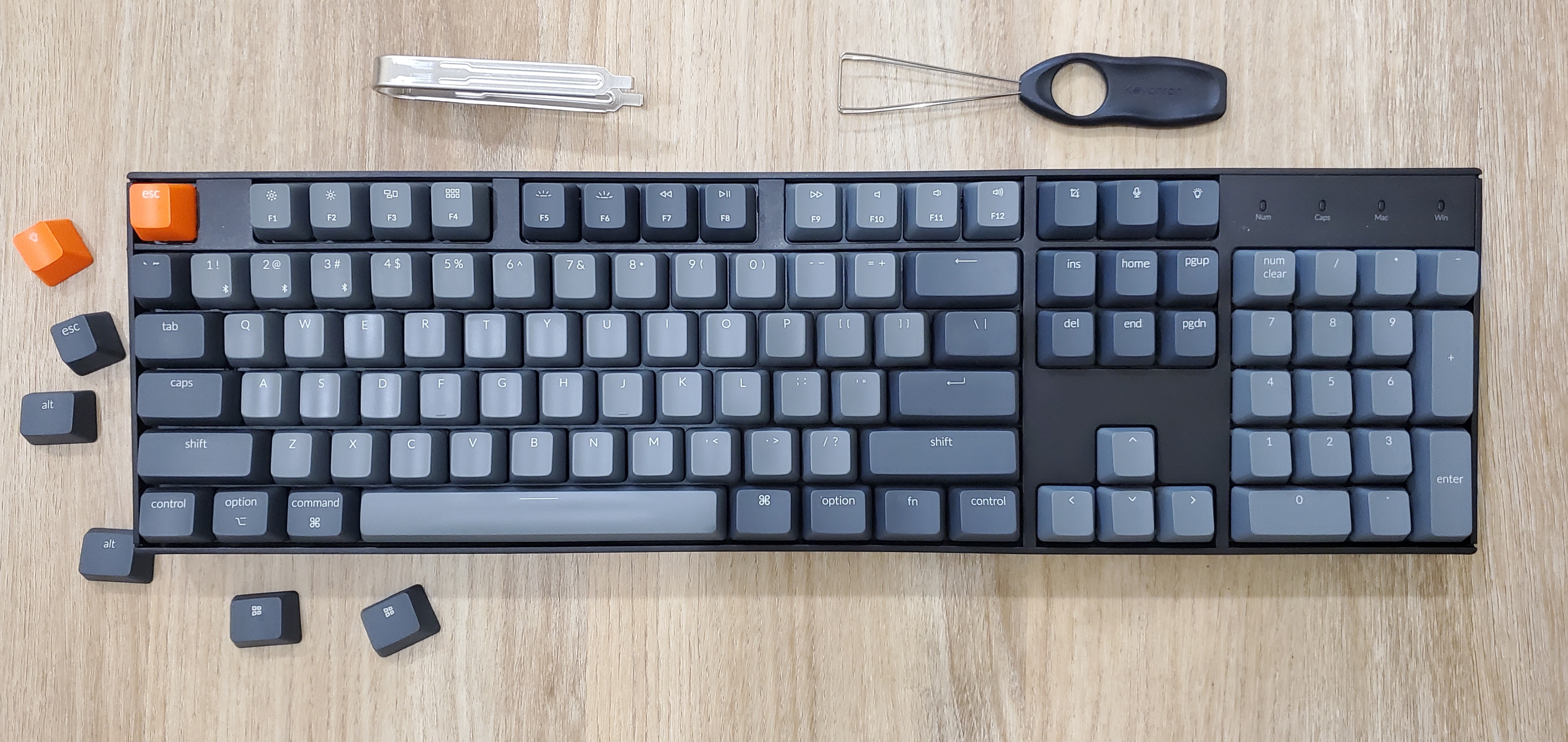 Keychron's K10 is one of the best wireless mechanical keyboards with a Mac layout.Scharon Harding
Keychron's K10 is one of the best wireless mechanical keyboards with a Mac layout.Scharon Harding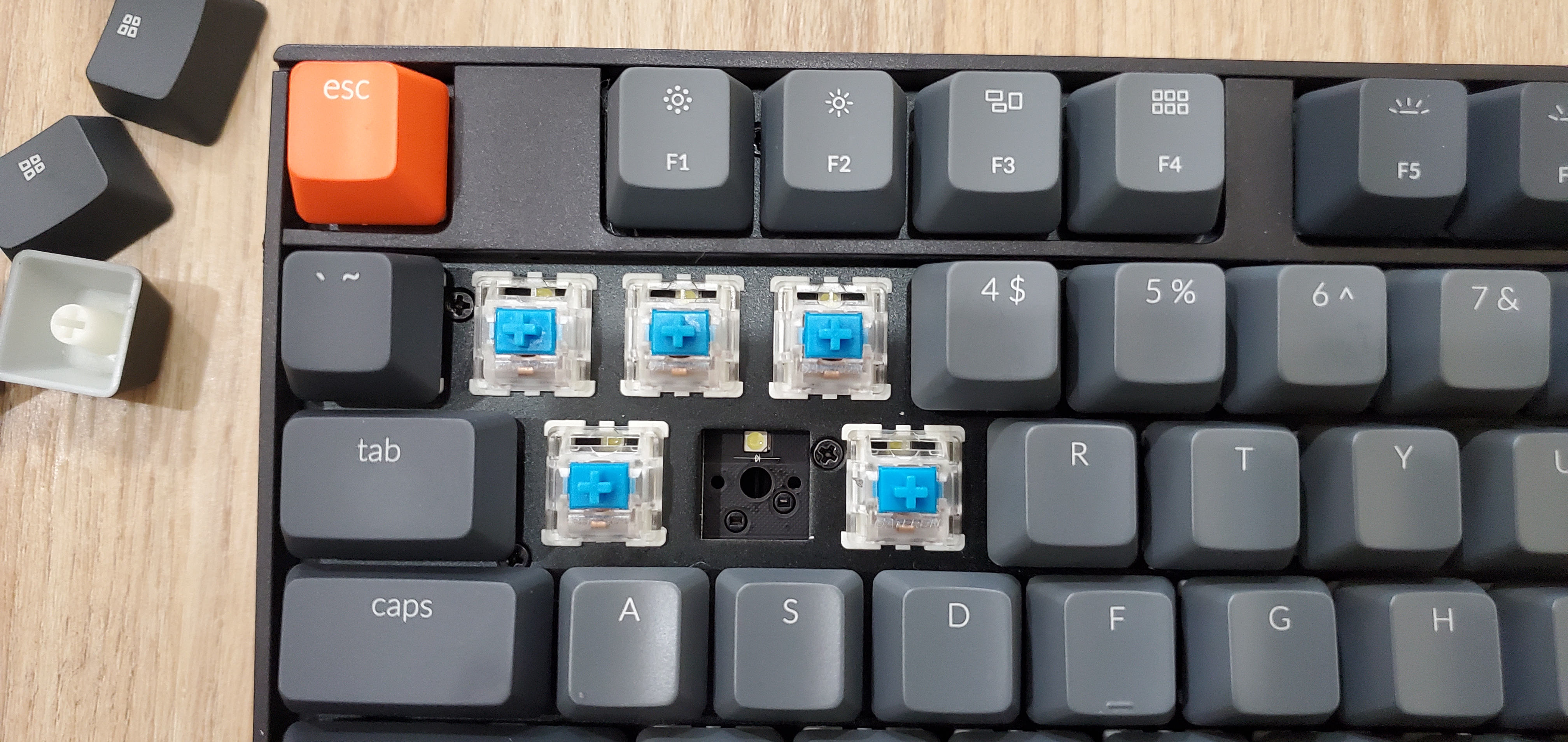 Hot-swappable switches add versatility and value.Scharon Harding
Hot-swappable switches add versatility and value.Scharon Harding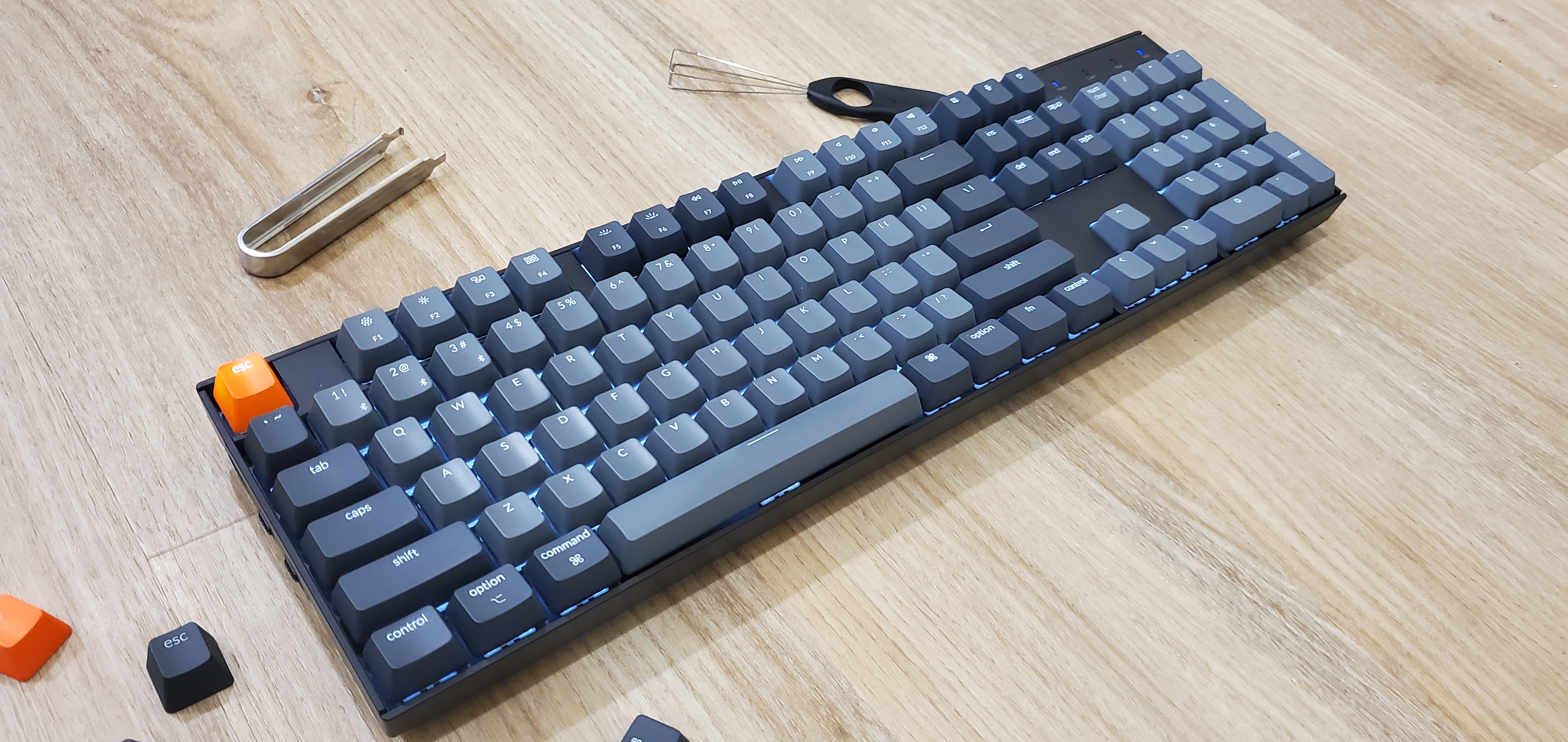 You can get the K10 with a white (pictured) or RGB backlight with premade effects.Scharon Harding
You can get the K10 with a white (pictured) or RGB backlight with premade effects.Scharon Harding The device caters to multi-OS use but has a cheaper build.Scharon Harding
The device caters to multi-OS use but has a cheaper build.Scharon Harding
| Specs at a glance: Keychron K10 | |||
|---|---|---|---|
| Connectivity options | Bluetooth 5.1, USB-A cable | ||
| Switches | Gateron G Pro Red, Blue, or Brown | ||
| Keycaps | ABS plastic | ||
| Dimensions | Plastic frame: 17.13×5.04×1.5 inches (435×128×38 mm) Aluminum frame: 17.32×5.08×1.57 inches (440x129x40 mm) |
||
| Weight | ~2.39 lbs (~1.08 kg) |
||
| Warranty | 1 year | ||
| Price (MSRP) | $84-$114 | ||
Buy: $84 at Amazon, $114 at Amazon
Some of the keyboards on our list claim to provide compatibility with Macs and iPhones, but the Keychron K10 has gone all-in on Apple niceties. Its included keycaps come with Mac and Windows legends, and its product page advertises a dedicated set for Linux users as well. Although the K10 has a modest feature set compared to the other keyboards here, it's also the least expensive.
As with the smaller Keychron K14, there are several versions of the K10, depending on if you want a white or RGB backlight, a plastic or aluminum chassis, and hot-swappability. I tested the K10 with a white backlight, plastic frame, and hot-swappable switches. The aluminum frame may be worth the investment. My review unit's ABS plastic frame feels mundane and might not hold up to abuse (one Ars staffer has seen a few Keychrons break after heavy use). The K10 also has a shorter warranty than we see with some of the other keyboards here.
Hot-swappability, however, means you won't have to toss the keyboard just because a switch breaks or you become tired of the switches it came with. As an added bonus, the keyboard supports both 3- and 5-pin mechanical switches.
The G Pro Blues I tested have 4 mm of travel and a 2.3 mm actuation point, and they actuate with 45 g of force. These are the only switches the K10 comes with that aren't pre-lubricated. Generally, they feel slightly scratchier and less stiff than Cherry MX Blues. Pinging noises are common, and the plastic rattling of stabilizers on bigger keys, like Backspace, was noticeable but not a deal-breaker. Meanwhile, the ABS keycaps feel about as slick and slippery as any old, cheap mechanical keyboard keycaps, providing almost no grip.
The top row is somewhat non-traditional, as there's no scroll lock or pause. An easily forgettable key combination that varies depending on OS toggles the keys from working as F1–F12, or media keys and other functions, including backlight and screen brightness control. But pressing F11 or F12 repeatedly wasn't as efficient as turning a volume knob would be.This isn't the keyboard for bringing settings over to different connected devices easily. The K10 doesn't have dedicated software for programming, nor does it have onboard memory. Keychron recommends using SharpKeys or Karabiner to program the K10.
There's no per-key backlight customization, though there are 18 premade effects. There's also no dongle, so competitive-minded gamers and other enthusiasts concerned about lag may be disappointed in the 90 Hz polling rate over Bluetooth.
Keychron says the keyboard's 4,000 mAh li-po battery can last for an impressive 240 hours without a backlight, 68 hours with white backlighting, and 72 hours with RGB. There's no battery meter, but a light near the power button flashes red when the battery is at 15 percent.
The good
- Competitive price, even with hot-swappability
- Thoughtfully includes keycaps for both Windows and Mac layouts
- Decent switch variety, including some pre-lubricated ones
The bad
- Shorter warranty, cheaper build than other keyboards on this list
- Slick, budget keycaps
- No onboard memory or homegrown software for easy programming or storing profiles
Logitech G915
Extra keys and speedy typing in a slender design
 Logitech's G915 low-profile mechanical keyboard.Scharon Harding
Logitech's G915 low-profile mechanical keyboard.Scharon Harding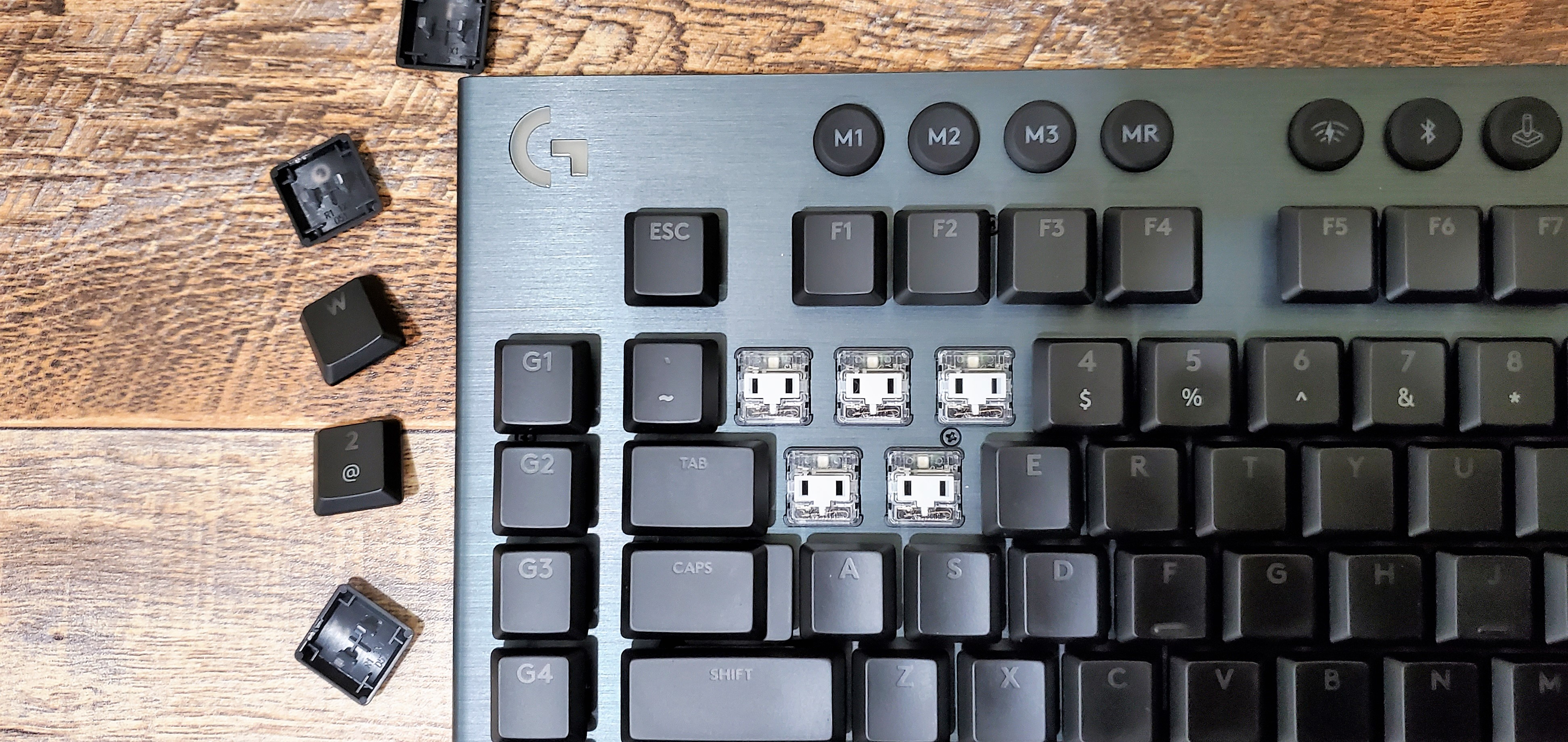 The keyboard only has Logitech's low-profile switches made with Kailh.Scharon Harding
The keyboard only has Logitech's low-profile switches made with Kailh.Scharon Harding There are five macro keys on the left, but the other keys aren't programmable.Scharon Harding
There are five macro keys on the left, but the other keys aren't programmable.Scharon Harding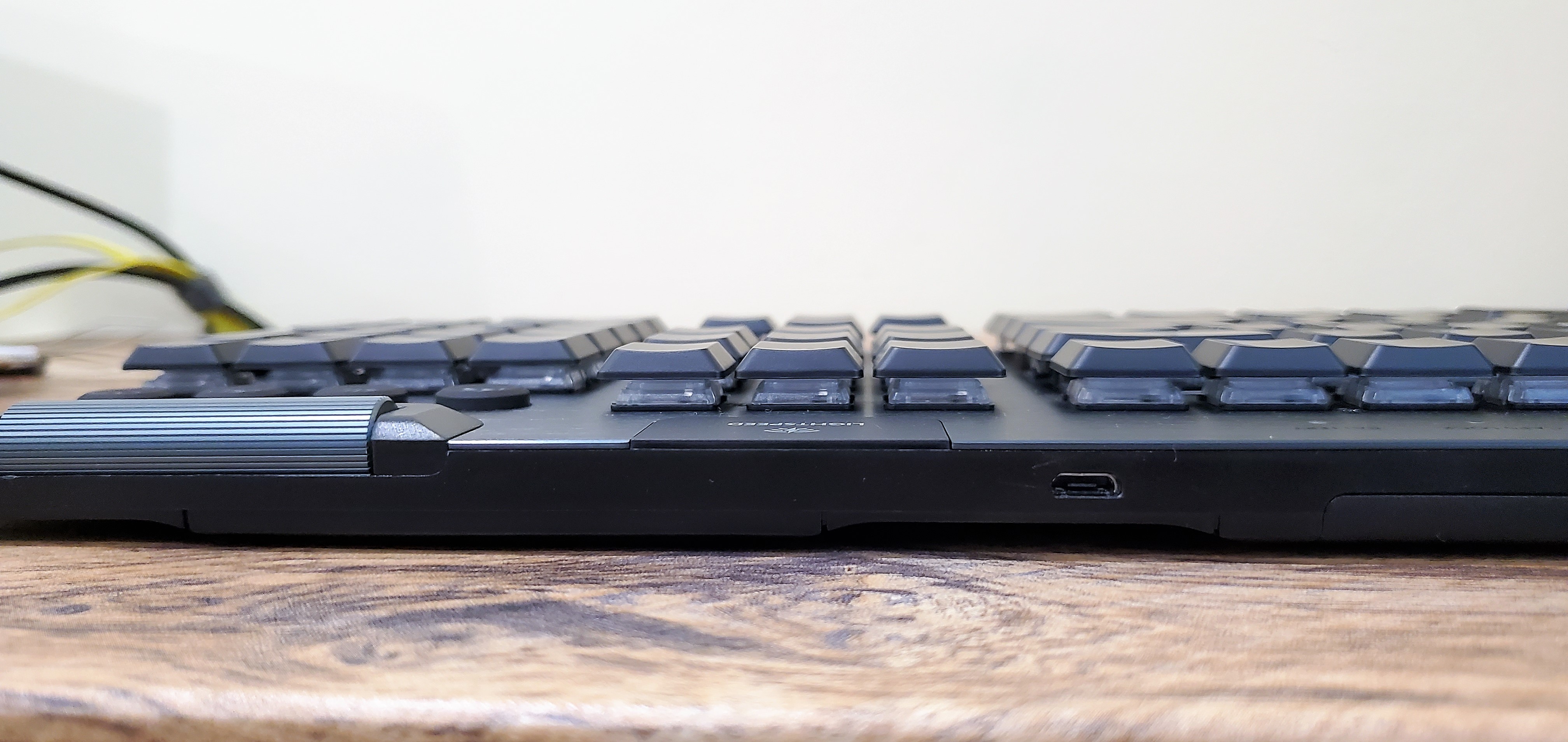 Micro USB is so yesterday.Scharon Harding
Micro USB is so yesterday.Scharon Harding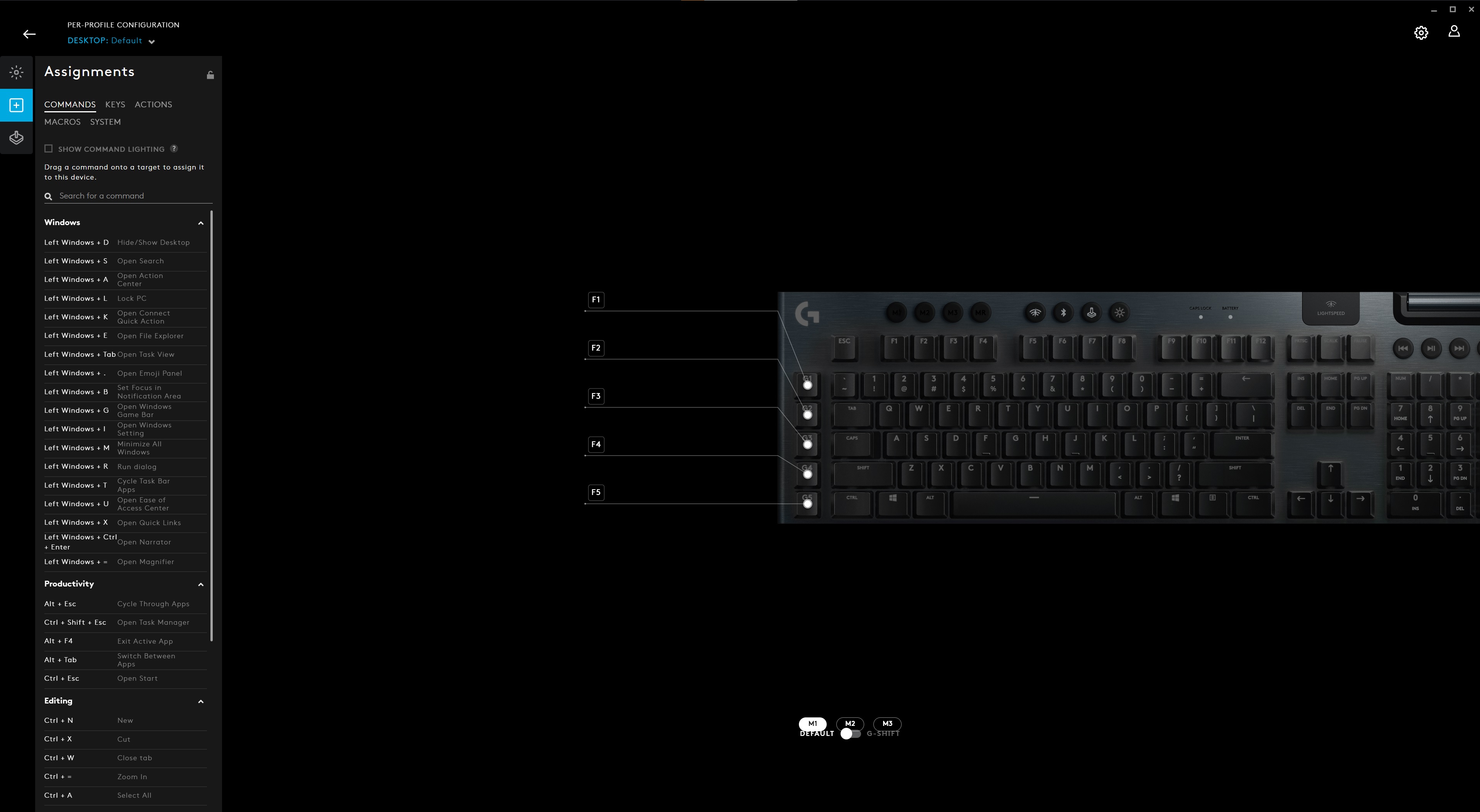 Each G-key is programmable with up to three inputs per software-stored profile.Logitech
Each G-key is programmable with up to three inputs per software-stored profile.Logitech
| Specs at a glance: Logitech G915 | |||
|---|---|---|---|
| Connectivity options | Bluetooth 5.0, USB-A dongle, USB-A cable | ||
| Switches | Logitech GL Clicky, Linear, or Tactile | ||
| Keycaps | ABS plastic | ||
| Dimensions | 18.7×5.91×0.87 inches (475.×150×22 mm) |
||
| Weight | 2.26 pounds (1.03 kg) |
||
| Warranty | 2 years | ||
| Price (MSRP) | $230 | ||
Buy: $180 at Amazon and Best Buy
Ever wish your keyboard had even more keys? Logitech's G915 has five bonus programmable "G-keys" complementing a full layout and dedicated media keys. Typing on it feels a bit unorthodox since it only comes with low-profile switches. If you can get used to them, though, Logitech's GL switches are responsive and snappy and have plenty of tactility.
When it comes to low-profile wireless luxury, there's a lot of tough competition, including Razer's DeathStalker V2 Pro, but the G915 stands strong with a decked-out setup. The G-keys support a variety of functions, including macros, app launching, and mouse movements. The rest of the keys aren't programmable with the keyboard's native software, though, leaving the BlackWidow V3 Pro the most programmable keyboard on this list.
Logitech's G Hub software is less intuitive to navigate than Razer's Synapse system, but once I mastered it, my onboard profiles carried over better than the BlackWidow V3 Pro's. Most advanced programmings, including macros and per-key RGB settings, work on other computers without G Hub, unlike Razer's keyboard. That said, launching apps doesn't work without Logitech's software.
The G915 has only one Bluetooth profile. There's a dongle that produces 1 ms of lag and an optional extender, but there's no built-in storage compartment for it. The smaller version of this keyboard, the G915 TKL, has dongle storage.
Low-profile switches aren't for everyone, but these switches provided me with rapid tactile typing. They each have 2.7 mm of total travel and a 1.5 mm actuation point, and the GL Clicky switches I tested require 55 g of force to actuate. The clicks are prominent; rather than pinging, I noticed a plastic-y, snappy noise as I typed aggressively.
I've also frequently used Logitech's GL Tactile switches (the same specs but 60 g of force to actuate) in the G915 TKL. The bump isn't as prominent as other low-profile tactile switches, like those in the Logitech MX Mechanical (3.2 mm of total travel). But the bump still ensures precise-feeling keypresses with strong feedback.
The G915's boring plastic bottom case is elevated by the 5052 aluminum-alloy top plate carrying a modern and luxurious brushed finish. The smooth-scrolling, aluminum volume wheel, and light-up rubbery keys heighten the luxe impressions.
Unfortunately, despite their oleophobic coating, the black ABS keycaps can't resist fingerprint smudges. The legends use a cheaper process—laser etching—than the doubleshot alternatives on our list. A Logitech spokesperson told Ars Technica that a UV clear coating helps durability, but ultimately, the keycaps don't feel like they belong on an over-$200 keyboard.
Logitech says the keyboard can last for up to 30 hours with its backlight at max brightness and 1,242 hours without a backlight. The G915 charges over Micro USB instead of USB-C.
The good
- Five bonus keys waiting to be programmed
- Extremely tactile premium switches... if you don't mind the low profile
- Media keys, brushed finish, and a slim design make for a gorgeous peripheral
The bad
- Only the five macro keys are programmable via Logitech's software
- Just 1 Bluetooth profile
- Micro USB is so yesterday
Epomaker TH96
Best sound profile
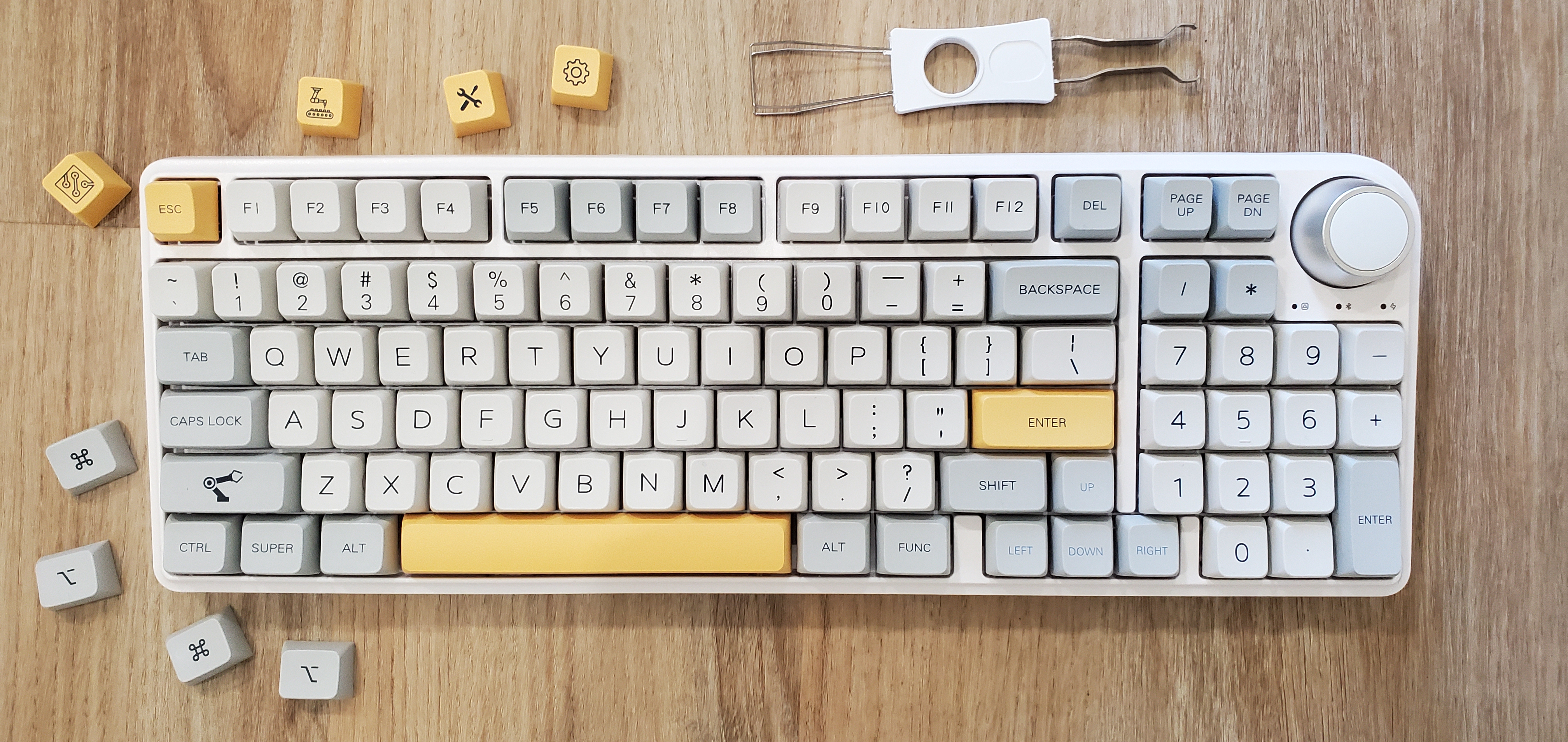 I prefer Epomaker's TH96 in this yellow colorway over the gray one.Scharon Harding
I prefer Epomaker's TH96 in this yellow colorway over the gray one.Scharon Harding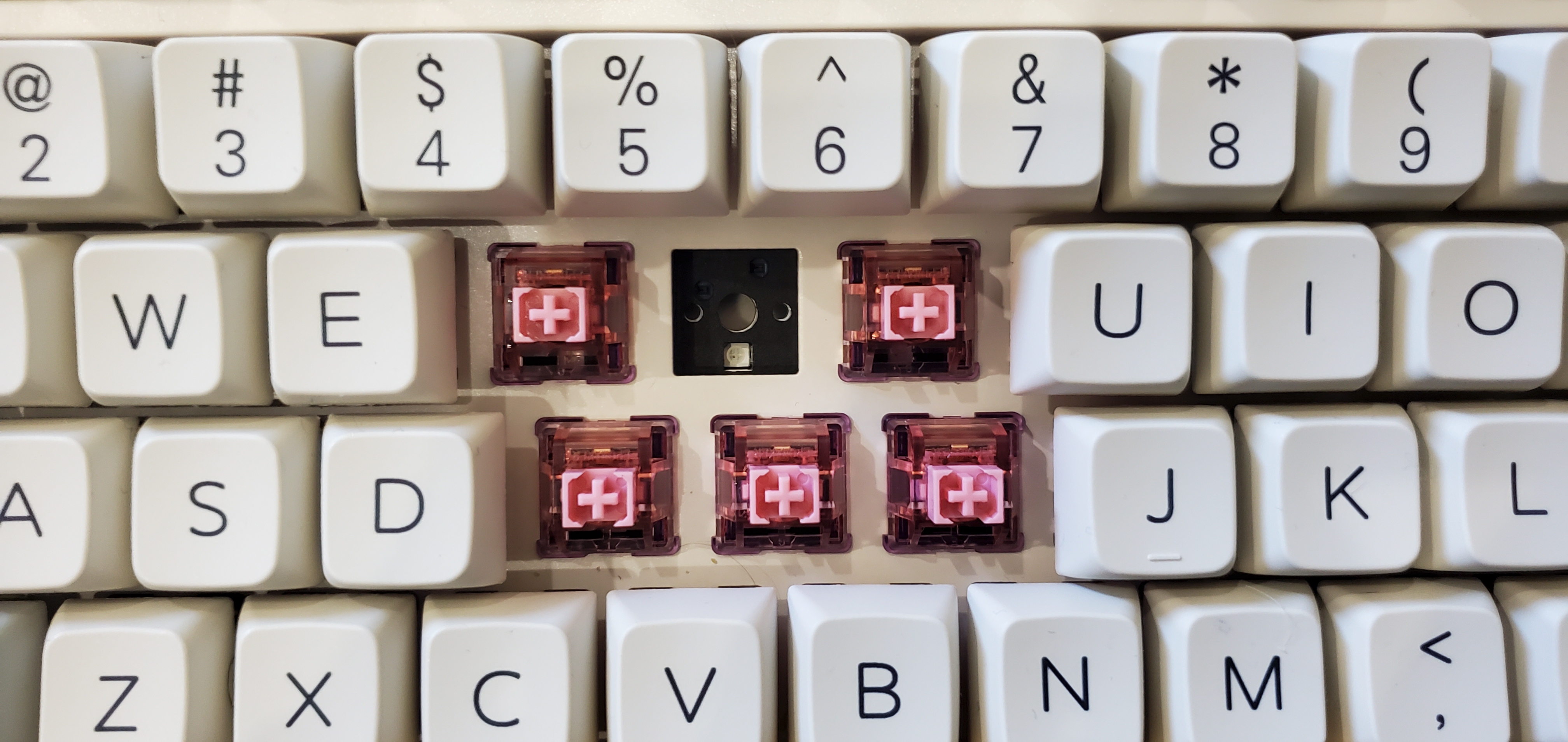 The keyboard is hot-swappable, but I'm not eager to rid it of these smooth switches.Scharon Harding
The keyboard is hot-swappable, but I'm not eager to rid it of these smooth switches.Scharon Harding The programmable volume knob has notched movement and presses in to mute.Scharon Harding
The programmable volume knob has notched movement and presses in to mute.Scharon Harding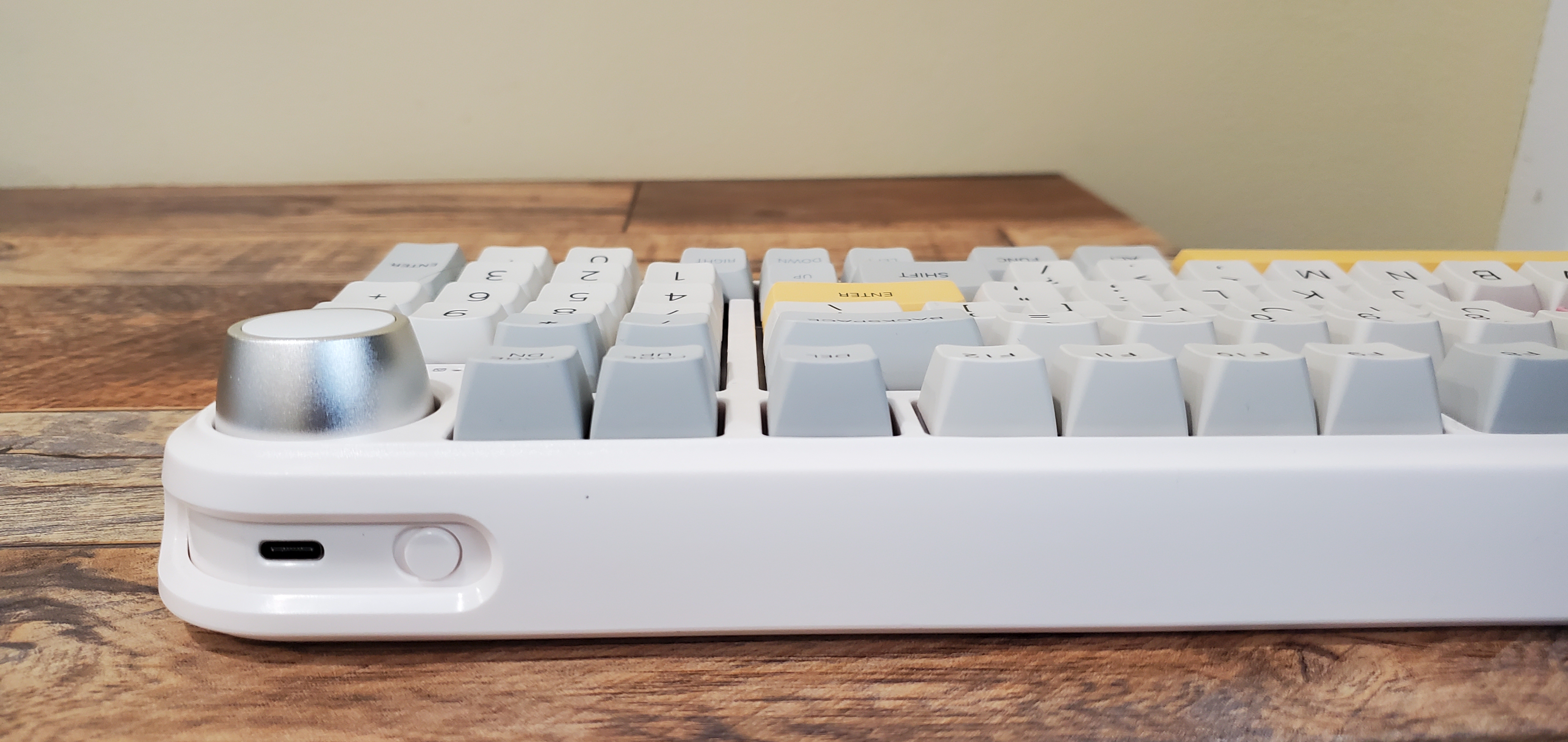 The TH96's power switch and USB-C port.Scharon Harding
The TH96's power switch and USB-C port.Scharon Harding This is the slowest peripheral app I've used in a while.Epomaker
This is the slowest peripheral app I've used in a while.Epomaker
| Specs at a glance: Epomaker TH96 | |||
|---|---|---|---|
| Connectivity options | Bluetooth 5.0, USB-A dongle, USB-A cable | ||
| Switches | Epomaker Flamingo or Budgerigar | ||
| Keycaps | PBT plastic | ||
| Dimensions | 15.28×5.43×1.5 inches (388×138×38mm) |
||
| Weight | 2.60 lbs (~1.18 kg) |
||
| Warranty | 1 year | ||
| Price (MSRP) | $150 | ||
Buy: $150 at Amazon
If you're after a mechanical keyboard for those sweet, deep "thock" sounds, the Epomaker TH96 is one of the best choices available. Where other keyboards here prioritize features, the TH96 emphasizes a build structure that successfully eliminates unwanted noises, even during the most aggressive typing sessions.
No matter how heavily or rapidly I typed or how frequently I bottomed out or smashed large buttons, the TH96 remained free of plastic rattling and metallic, echoing dings. Keypresses create a gentle tap noise, while more fierce typing yields harmonious thocking noises that are crisp and slightly hollow. There are some standouts, like the slightly louder spacebar and extra hollow-sounding Ctrl, and the keyboard's overall sound profile was a pleasant addition to my workflow.
The TH96 gets its euphonious nature from a generous amount of sound-dampening materials, as depicted in this diagram. It's the only gasket-mounted keyboard on this list, and it uses poron foam gaskets between its top case and the stainless-steel plate beneath that. Underneath the steel plate is a thin, sound-absorbing silicon pad running the length of the keyboard and separating the plate from the keyboard's PCBA. Finally, there's a thicker, sound-dampening silicon layer between the TH96's PCBA and bottom case.
I tested the TH96 with Epomaker's linear Flamingo switches. They have about 3.8 mm of travel, actuate at 1.5mm, and require 47 g of force. They're also smooth, producing no scratchy feeling on press or return, likely because they're pre-lubed and lubricate themselves further when pressed, Epomaker says.
Typing feels airy and light. That takes some getting used to, but I eventually appreciated how quickly depressed keys seemed to rise back up when I started releasing pressure. The keys are very stable, producing minimal wobbling. Epomaker's keyboard also comes with its tactile Budgerigar switches, but you don't have to commit either way. The TH96 is hot-swappable, supporting 3- and 5-pin switches.
Also aiding the typing experience, as well as the TH96's appearance, are tall, curvy keycaps. Shape-wise, they use the MDA profile, which is like a shorter SA profile with more sculpting. These caps are weightier during typing, which works well with the light, linear Flamingo switches. The PBT plastic isn't slick, but it's still more slippery than I would prefer. Like doubleshot legends, these dye-sublimated ones shouldn't fade. Large lettering makes them easily legible.
The keyboard's 96 percent layout saves desk space without getting rid of that precious numpad, though there are no macro keys for extra programmability. And while there's a decent preprogrammed function layer with options like media and screen brightness controls, it's hard to remember without sub-legends. Like Keychron's K10, the TH96 is Mac-friendly, thanks to extra keycaps and Fn shortcuts for macOS, but there's no convenient switch for toggling OSes (just another key combo to memorize).
The TH96 has three Bluetooth profiles and a USB-A dongle, but having to use key combinations to switch from Bluetooth to dongle or wired mode is a nuisance. The other keyboards here simplify this with physical switches.
Then there's Epomaker's Driver app, which doesn't work when using the keyboard with Bluetooth. The app doesn't show you key bindings, unless you click on an individual key and view the window that pops up within the app. Making any changes also results in a seconds-long delay. With enough patience, you can reprogram every key except Fn with key combinations, macros, and mouse movements, plus most of the keyboard's function layer. Still, I prefer other keyboards for advanced features like launching apps or websites or storing profiles.
Unfortunately, Epomaker doesn't provide a battery life estimate for the TH96's 6,000 mAh battery. Hitting Fn and B make the letters Q through P light up, depending on how much battery life remains, but there's no battery meter in the keyboard's app for more precision.
The good
- Superior typing feel and sound
- Hot swappability means no commitments necessary
- On the Mac-friendly side
The bad
- No macro keys or memory profiles and only one media key
- Software doesn't show key programmings and is laggy, with limited functionality
- Some will prefer a full, or even larger, layout
Notable mentions
- Asus ROG Claymore II ($220 MSRP): For people who don't want to choose between a tenkeyless or full-size board, this keyboard's numpad is removable and attachable to the right or left side (yay, lefties!). That's an admirably versatile form factor. But despite its robust feature set, including four macro keys and USB passthrough, the keyboard can only wirelessly connect via dongle, so this pricey peripheral isn't great for multi-device use.
- Asus ROG Falchion NX ($150 MSRP): Here's an extra-portable option with a plastic cover and compact design that still squeezes in arrow keys. Asus' extremely tactile ROG NX Brown optical-mechanical switches deliver extra pop as they reset and use heavily textured doubleshot PBT keycaps. The side touch panel for volume control (or input programmed) feels imprecise, however, and the Falchion NX doesn't use Bluetooth.
- Logitech MX Mechanical ($170 MSRP): This is a candidate for those new to mechanical keyboards. It has three Bluetooth profiles and a dongle, plus responsive, low-profile switches that are a good transition from laptop or membrane typing. There's also a familiar layout and a classic colorway, but a discount would help it compete better. You could opt for the cheaper 75 percent version, however, and there's also the Logitech MX Mechanical Mini for Mac.
- Razer Pro Type Ultra ($160 MSRP): If you like linear switches and the bright look of this keyboard, it could make for a strong multi-device wireless companion. There are four Bluetooth profiles and a dongle, and sound-dampening foam fights pinging noises. The keyboard could use media keys and better keycaps, though.
- HHKB Professional Hybrid ($281 MSRP): There's a swarm of enthusiasts who would riot over a "best mechanical keyboards" list that doesn't mention Topre switches. The electrostatic capacitive switches that are like a mix between mechanical and rubber dome switches have gained a cult following for their tactility and crisp noise. However, there are few people who can use an arrow-free keyboard, even with Mac and Windows legends and four Bluetooth profiles, without becoming less productive.
Ars Technica may earn compensation for sales from links on this post through affiliate programs.
https://ift.tt/GHuirCo
Technology
No comments:
Post a Comment